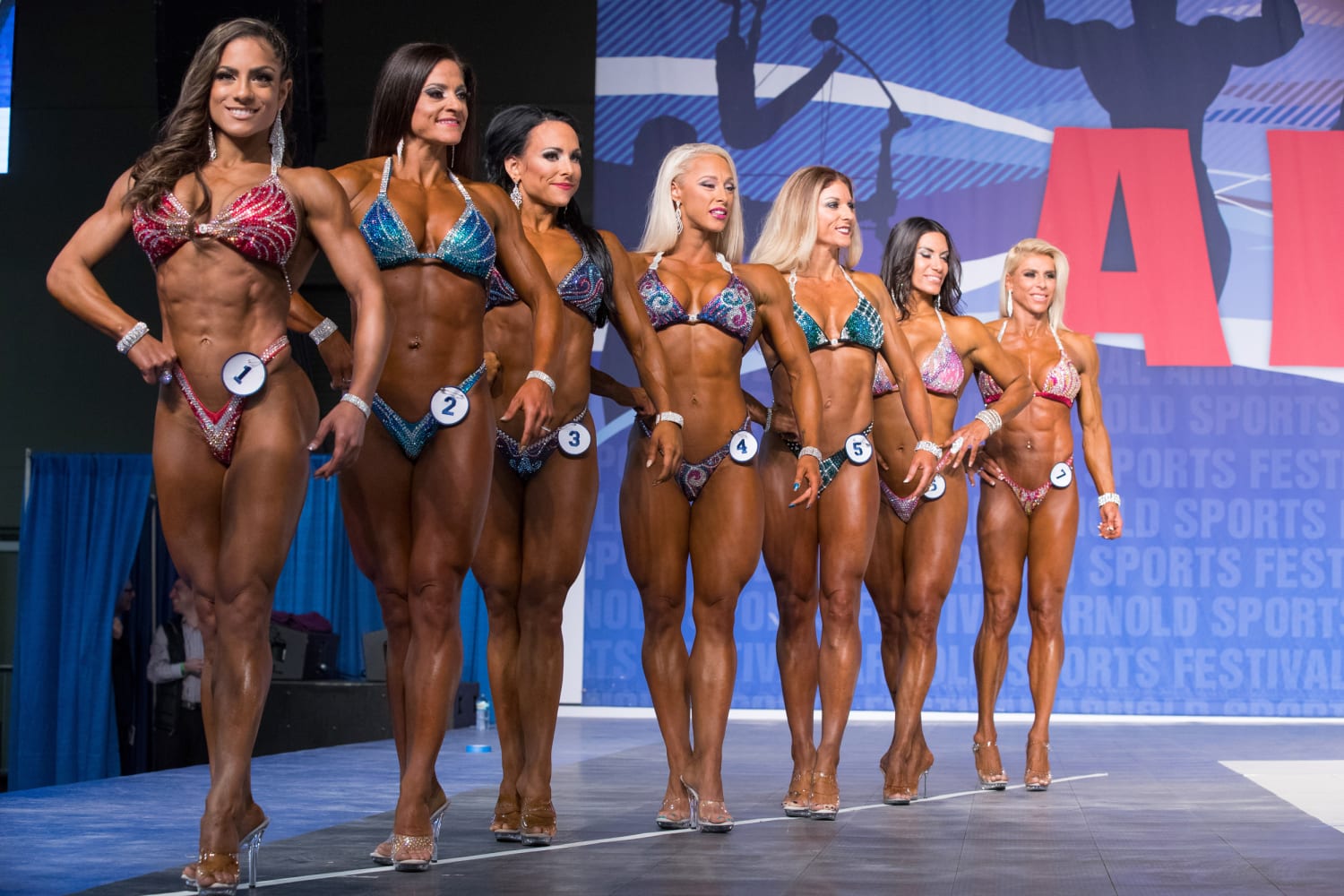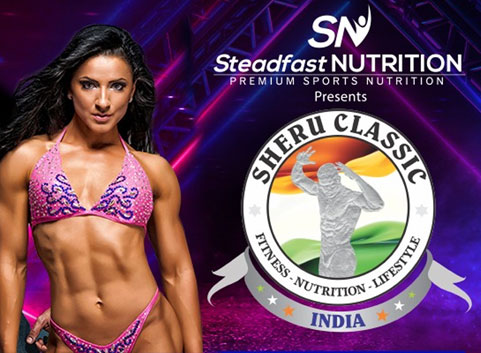Are you looking to build lean muscle and achieve a competition-ready body? The world of women’s physique may seem overwhelming, but with the right knowledge and training, you can reach your goals.
In this blog post, we will take you on a journey through the history of women’s physique and how it has evolved over time.
So let’s get started on your path to a stronger, healthier you!
History of Women’s Physique
The history of women’s physique competitions is fascinating and multifaceted. From the early days of bodybuilding, women have been pushing the boundaries of what was once thought possible for their bodies.
But it wasn’t until the first Ms. Olympia competition in 1980 that female bodybuilders truly had a platform to showcase their hard work and dedication to muscle building.
Over the years, changes in judging criteria have led to the evolution of women’s physique from extreme size to overall muscle tone and symmetry. Today, many female athletes train tirelessly to compete at the highest level in this legitimate sport.
Introduction of Women’s Physique category
The Women’s Physique category was introduced in 2012 by the International Federation of Bodybuilding and Fitness (IFBB) as a new competitive division. This was a major step towards providing female athletes with an opportunity to showcase their muscularity and athleticism without being judged solely on their bodybuilding appearance.
Unlike traditional bodybuilding competitions, Women’s Physique competitions require a balance of muscle size, symmetry, definition, and overall presentation. This category has gained popularity among female fitness enthusiasts who want to build lean muscle and sculpt their physique for a competition-ready look.
Evolution of Women’s Physique from 1977-2019
The evolution of women’s physique competitions over the years has been significant. Starting with the first-ever women’s bodybuilding contest in 1977, the sport gained recognition in 1980 when Ms. Olympia was held for the first time. However, early female bodybuilders faced discrimination for their muscular physiques. The sport then evolved to include categories like figure and bikini, which prioritized a leaner look. In recent times, there has been a resurgence of interest in women’s physique competitions that celebrate muscularity and athleticism, making it a popular choice amongst female fitness enthusiasts.

Understanding Women’s Physique Competitions
Building a competition-ready physique requires a fundamental understanding of what judges look for in women’s physique competitions. Women’s physique competitions are judged based on muscle tone, symmetry, and overall presentation. It is crucial to work with a coach or trainer who can help create a customized workout plan that balances strength training and proper nutrition. Mental preparation and confidence are also essential factors in achieving a competition-ready body. Competitors should be aware of the different categories based on age and experience level, as well as the rules and regulations that govern their division.
Different Bodybuilding Divisions for Women
Bodybuilding competitions for women typically have several divisions based on factors such as age, experience level, and body type. The most common divisions are:
- Women’s Bodybuilding: This division is for the most muscular and defined women, who have typically been training for several years and have significant muscle mass. This division is known for its extreme muscularity and definition.
- Women’s Physique: This division is for women who have significant muscle mass, but not to the extent of bodybuilding. Women’s Physique competitors have a more athletic and toned look than bodybuilders.
- Women’s Figure: This division is for women who have a more natural, feminine look with less muscle mass than physique and bodybuilding competitors. Figure competitors focus on a balanced physique with well-defined muscles and proportionate curves.
- Women’s Bikini: This division is for women who have a fit and toned physique with a focus on overall aesthetics. Bikini competitors have a softer, more feminine look than physique and bodybuilding competitors, with a focus on a lean and toned physique.
- Women’s Wellness: This is a newer division that focuses on overall health and wellness, with an emphasis on a fit and toned physique, healthy lifestyle, and positive attitude. Wellness competitors have a more athletic and curvy look, with a focus on overall health and fitness.
Each division has specific criteria for judging, and competitors are judged on their overall appearance, muscle tone, symmetry, and stage presence.
Rules and Regulations for Women’s Physique Competitions
Women’s Physique Competitions have specific rules and regulations that competitors must follow to ensure a fair and safe environment.
- Participants are judged based on their muscularity, symmetry, and overall presentation, which includes specific attire requirements such as a two-piece or one-piece suit with high heels.
- Bodybuilders aren’t allowed to use any performance-enhancing drugs or substances and must adhere to strict guidelines for posing and presentation during the competition.
- It’s important for competitors to review the regulations carefully before participating in Women’s Physique Competitions to avoid disqualification.

Qualifications for Women’s Physique Competitions
Women’s Physique competitions are a category of bodybuilding that emphasizes muscle development, symmetry, and overall conditioning. The specific qualifications for these competitions vary depending on the organization that hosts them, but some general guidelines can be followed.
- Age: Typically, competitors must be at least 18 years old to compete in Women’s Physique competitions.
- Division: Competitors must compete in the Women’s Physique division specifically and not in other categories like Bikini or Figure.
- Muscularity: Competitors must have a well-developed and proportionate physique with visible muscle separation and definition.
- Symmetry: The muscles of the body should be in proportion to each other, creating an aesthetically pleasing look.
- Conditioning: Competitors must have low body fat levels and be in excellent overall condition.
- Posing: Competitors must have a good stage presence and be able to present their physique in a polished and confident manner.
- Attire: Women’s Physique competitors wear a two-piece posing suit, which should be in good taste and accentuate their physique without being overly revealing.
It’s important to note that different organizations may have slightly different qualifications and criteria for Women’s Physique competitions. It’s advisable for competitors to thoroughly review the specific guidelines for the organization they plan to compete in.
Training for Women’s Physique
· Resistance Training for Building Lean Muscle
Building lean muscle is crucial for women’s physique competitors. Resistance training is an effective way to achieve this, with exercises such as squats, deadlifts, and bench presses being particularly useful for overall muscle development. Additionally, isolation exercises can be used to target specific areas of the body. Gradually increasing the weight and intensity of workouts, along with proper rest and recovery, are key components in building a competition-ready physique.
· Importance of Cardiovascular Training
Cardiovascular training is critical for women’s physique competitors in achieving optimal physical fitness and muscle development. By incorporating both steady-state cardio and high-intensity interval training (HIIT) into your routine, you can improve your heart health, endurance, and overall fitness while aiding in weight loss and achieving a lean physique.
· Optimal Training Frequency and Volume
When it comes to training for women’s physique competitions, finding the optimal frequency and volume is crucial. While experience level and individual goals play a role, compound movements like squats and deadlifts should be prioritized for overall muscle development. Accessory exercises can also target specific areas of the body for improved symmetry.
· Nutrition for Women’s Physique
Proper nutrition is essential for building a lean physique and achieving competition readiness. Adequate protein intake supports muscle growth and recovery, while complex carbohydrates provide sustained energy during workouts. Incorporating healthy fats can help with hormone production and overall health. Staying hydrated is crucial for optimal performance and recovery.
· Importance of Hydration and Supplementation
Proper hydration is crucial for women’s physique competitors, as it helps maintain muscle function, regulate body temperature, and prevent fatigue. Drinking enough water throughout the day can also aid in digestion and nutrient absorption. In addition to water, supplementation with electrolytes such as sodium and potassium can help maintain proper hydration levels and improve overall performance. However, it is important to consult with a healthcare professional before starting any new supplement regimen.

Top Women’s Physique Olympia Champions
The Women’s Physique Olympia is the ultimate test for female bodybuilders.
Juliana Malacarne, a four-time champion, redefined the standards of women’s physique when she debuted in 2013.
Shanique Grant, a two-time Olympia winner, is known for her impressive back and glutes.
Daniely Castilho, the reigning champion, brings a unique combination of size and conditioning to the stage.
These champions serve as role models for aspiring physique competitors and demonstrate what hard work and dedication can achieve. By following their training routines and nutrition plans, women can make significant progress towards building lean muscle and achieving competition-ready physiques.
Inspiration from Women Who Have Achieved Competition-Ready Bodies
Some women have overcome incredible challenges to achieve competition-ready bodies, serving as an inspiration to those looking to build lean muscle and compete at a high level. Notable role models in the women’s physique category include Dana Linn Bailey, Ashley Kaltwasser, and Juliana Malacarne, who have all achieved success through hard work and dedication. Their unique journeys can teach us that there is no one-size-fits-all approach to achieving a competition-ready body, and that setting realistic goals and tracking progress are essential to success.
Let’s Sum Up
Women’s physique is no longer a male-dominated sport, and women are now challenging the status quo. Building a lean, competition-ready body requires discipline, hard work, and dedication. Whether you’re a beginner or an experienced athlete, nutrition and training play a vital role in achieving your desired body type. Remember to focus on resistance training, cardiovascular exercise, and optimal nutrition to get the best results. Don’t forget to practice posing and presentation techniques to help you stand out on stage.
If you need inspiration, look towards top Women’s Physique Olympia champions or other women who have achieved competition-ready bodies.
Start taking steps towards building your dream body today!
You May Also Like:
Breaking Stereotypes: The Rise of Female Bodybuilding and What it Means for the Industry
What is the difference between Women’s figure and Physique Divisions?
Top 7 Muscular Women on Instagram You Need to Follow



